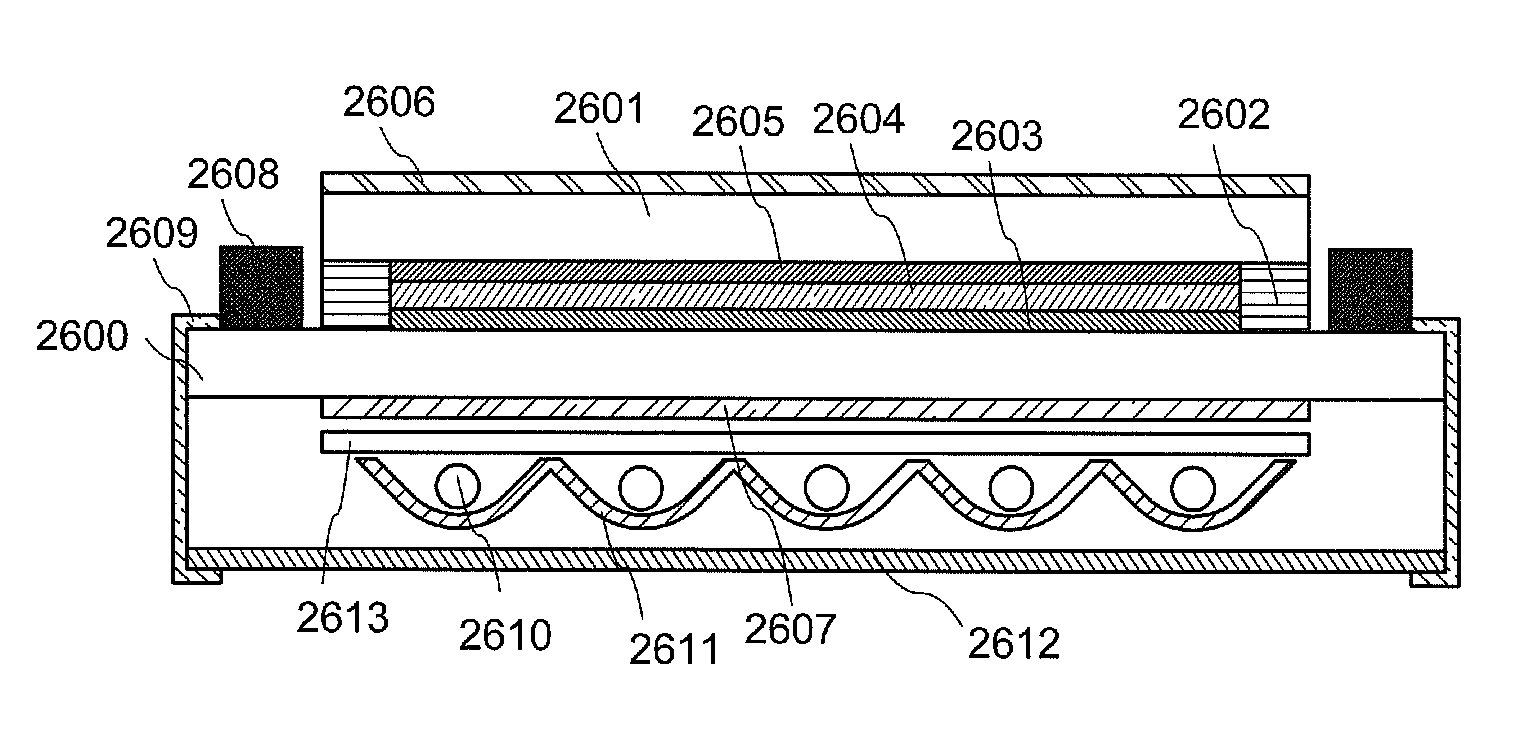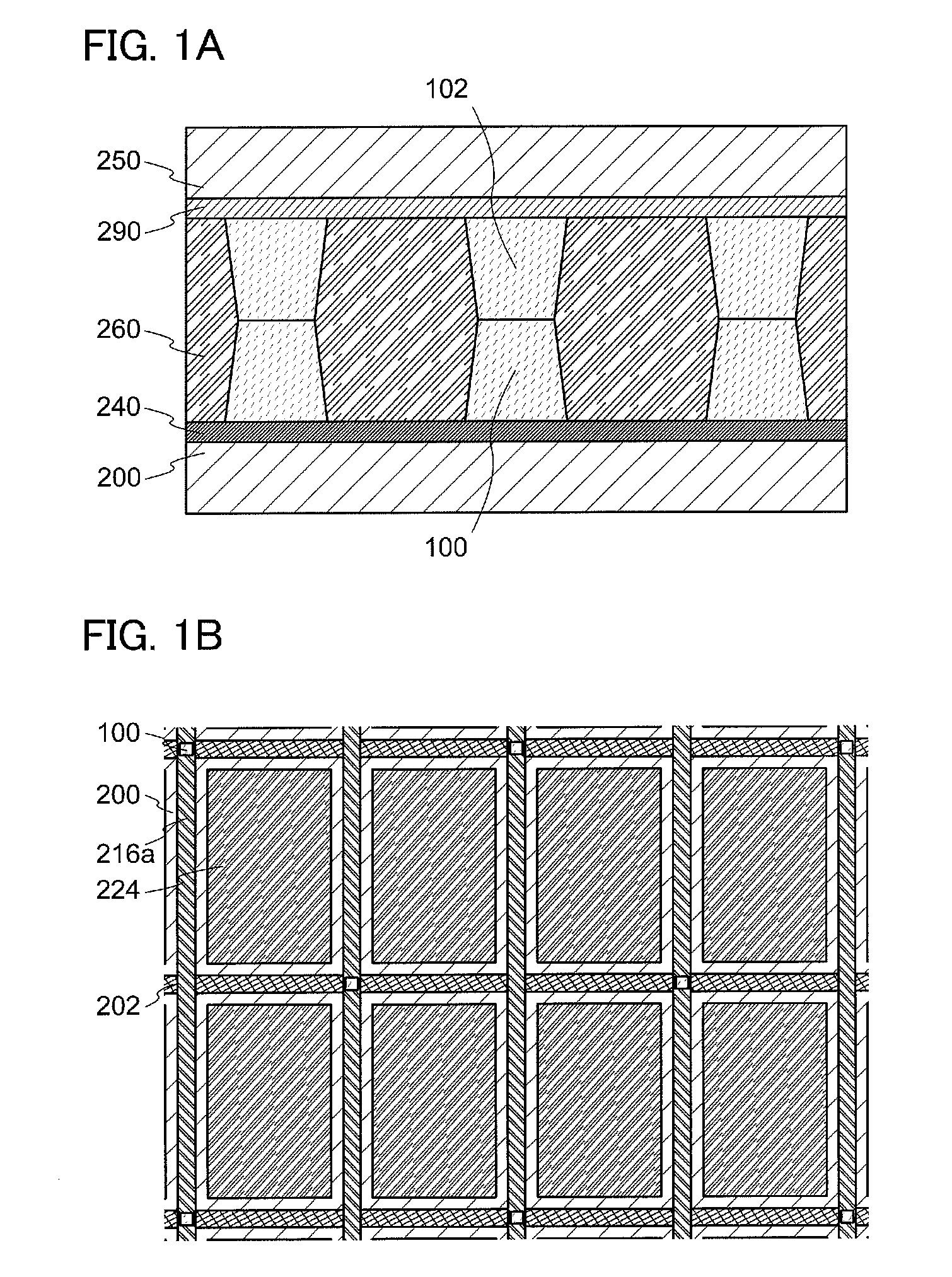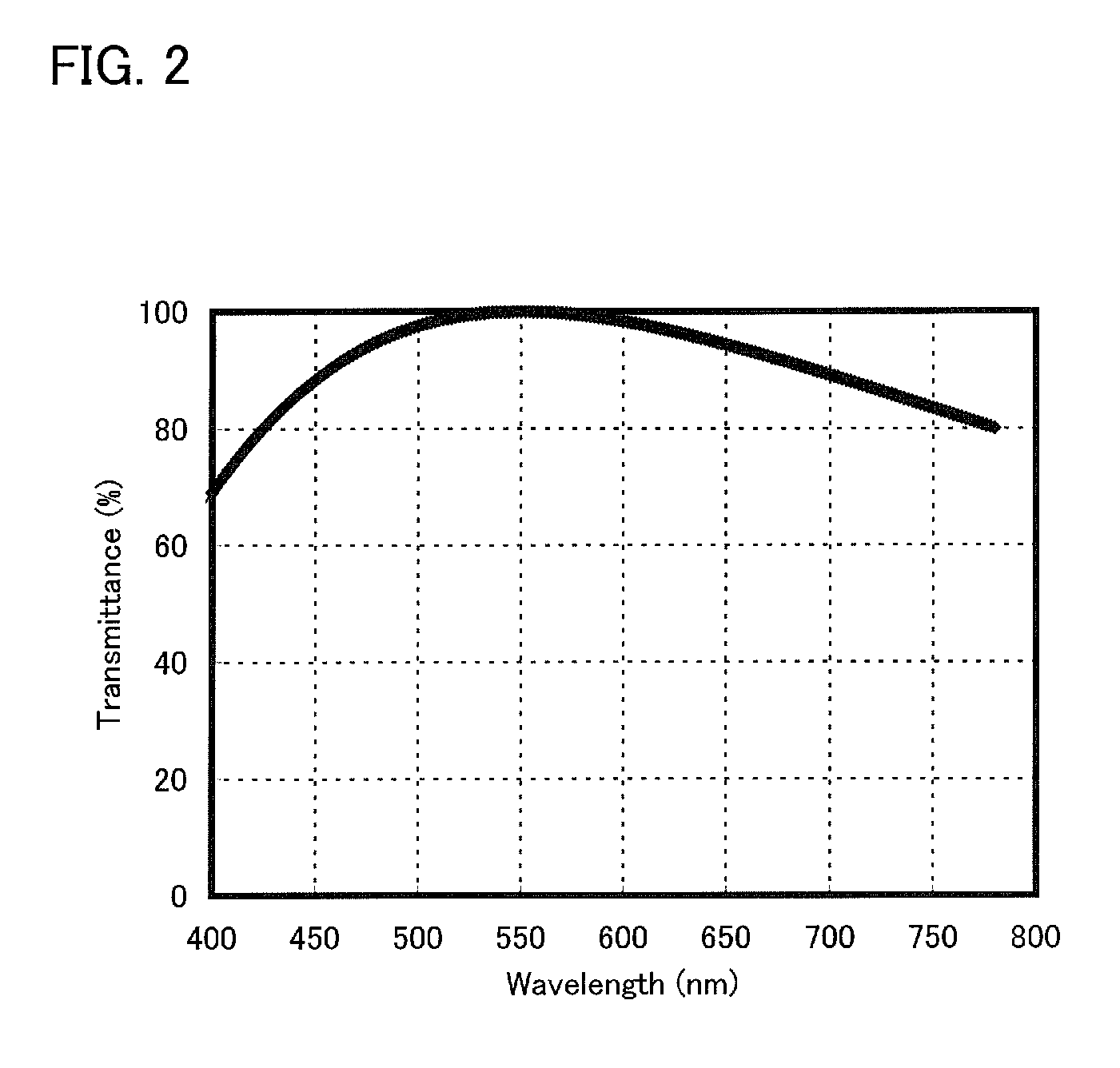Liquid Crystal Display Device
- Summary
- Abstract
- Description
- Claims
- Application Information
AI Technical Summary
Benefits of technology
Problems solved by technology
Method used
Image
Examples
embodiment 1
[0041]In this embodiment, a liquid crystal display device which is one embodiment of the disclosed invention is described with reference to FIGS. 1A and 1B. Note that the structure illustrated in FIGS. 1A and 1B is only an example, and therefore, another structure may also be employed.
[0042]FIGS. 1A and 1B are a cross-sectional schematic view and a plan schematic view of the liquid crystal display device which is one embodiment of the disclosed invention, respectively.
[0043]In the liquid crystal display device described in this embodiment, the distance between a first substrate 200 and a second substrate 250 is maintained by a first spacer layer 100 and a second spacer layer 102 (see FIG. 1A). More specifically, a surface of the first spacer layer 100 which is substantially parallel to a main surface of the first substrate 200 and a surface of the second spacer layer 102 which is substantially parallel to a main surface of the second substrate 250 are in contact with each other, and...
embodiment 2
[0058]In this embodiment, a method for manufacturing a liquid crystal display device which is one embodiment of the disclosed invention is described with reference to FIGS. 3A to 3E, FIGS. 4A to 4D, and FIG. 5. Here, cross sections taken along lines A-B and C-D in FIG. 5 correspond to FIG. 4B or FIG. 4C. Note that part of components is omitted in FIG. 5. In addition, the manufacturing method illustrated in FIGS. 3A to 3E, FIGS. 4A to 4D, and FIG. 5 is only an example, and therefore, another manufacturing method may also be employed.
[0059]First, a conductive layer 202 serving as a gate electrode or a gate wiring (also referred to as a scan line) is selectively formed over a first substrate 200, and a gate insulating layer 204 and a semiconductor layer 206 are formed so as to cover the conductive layer 202 (see FIG. 3A).
[0060]The first substrate 200 can be made of glass, metal (typically stainless steel), ceramics, plastic, or the like. Here, a substrate formed of glass (a glass subst...
embodiment 3
[0093]In this embodiment, a liquid crystal display device which is another embodiment of the disclosed invention is described with reference to FIGS. 6A and 6B and FIGS. 7A and 7B. Note that the structures illustrated in FIGS. 6A and 6B and FIGS. 7A and 7B are only examples, and therefore, another structure may also be employed.
[0094]FIG. 6A and FIG. 7A are cross-sectional schematic views of the liquid crystal display device which is one embodiment of the present invention. FIG. 6B and FIG. 7B are plan schematic views of the liquid crystal display device.
[0095]Difference between the liquid crystal display device described in this embodiment and the liquid crystal display device (see FIGS. 1A and 1B) described in any of the foregoing embodiments is the size and shape of a first spacer layer 100, the size and the shape of a second spacer layer 102, or the like. The details of the other structures are omitted here because any of the foregoing embodiments can be referred to.
[0096]FIGS. ...
PUM
 Login to View More
Login to View More Abstract
Description
Claims
Application Information
 Login to View More
Login to View More - R&D
- Intellectual Property
- Life Sciences
- Materials
- Tech Scout
- Unparalleled Data Quality
- Higher Quality Content
- 60% Fewer Hallucinations
Browse by: Latest US Patents, China's latest patents, Technical Efficacy Thesaurus, Application Domain, Technology Topic, Popular Technical Reports.
© 2025 PatSnap. All rights reserved.Legal|Privacy policy|Modern Slavery Act Transparency Statement|Sitemap|About US| Contact US: help@patsnap.com



